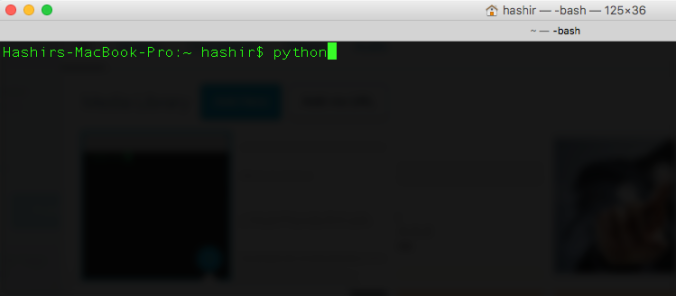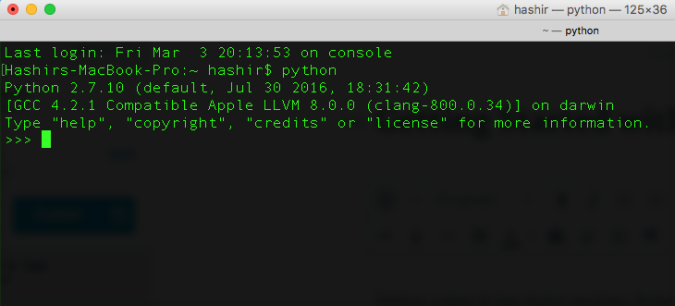Python programing language provides no braces ( like in C++ or Javascript ) to indicate blocks of code. Blocks of code are denoted by line indentation, which is rigidly enforced.
The number of spaces in the indentation is variable, but all statements within the block must be indented the same amount.
For example the below code snippet is correct
if True:
print "The Value is True"
else:
print "False"
However, the following block generates an error −
if True:
print "Answer"
print "True"
else:
print "Answer"
print "False"
Thus, in Python all the continuous lines indented with same number of spaces would form a block. The following example has various statement blocks −
#!/usr/bin/python
import sys
try:
# open file stream
file = open(file_name, "w")
except IOError:
print "There was an error writing to", file_name
sys.exit()
print "Enter '", file_finish,
print "' When finished"
while file_text != file_finish:
file_text = raw_input("Enter text: ")
if file_text == file_finish:
# close the file
file.close
break
file.write(file_text)
file.write("\n")
file.close()
file_name = raw_input("Enter filename: ")
if len(file_name) == 0:
print "Next time please enter something"
sys.exit()
try:
file = open(file_name, "r")
except IOError:
print "There was an error reading file"
sys.exit()
file_text = file.read()
file.close()
print file_text
Multi-Line Statements
Statements in Python typically end with a new line. Python does, however, allow the use of the line continuation character (\) to denote that the line should continue. For example −
total = item_one + \
item_two + \
item_three
Statements contained within the [] -Lists, {} – Dictionary , or () – Tuples brackets do not need to use the line continuation character. For example −
days = ['Monday', 'Tuesday', 'Wednesday',
'Thursday', 'Friday']
Quotation in Python
Python accepts single (‘), double (“) and triple (”’ or “””) quotes to denote string literals, as long as the same type of quote starts and ends the string.The triple quotes are used to span the string across multiple lines. For example, all the following are legal −
word = 'word'
sentence = "This is a sentence."
paragraph = """This is a paragraph. It is
made up of multiple lines and sentences."""
Comments in Python
A hash sign (#) that is not inside a string literal begins a comment. All characters after the # and up to the end of the physical line are part of the comment and the Python interpreter ignores them.
#!/usr/bin/python
# First comment
print "Hello, Python!" # second comment
This produces the following result −
Hello, Python!
You can type a comment on the same line after a statement or expression −
name = "Madisetti" # This is again comment
You can comment multiple lines as follows −
# This is a comment.
# This is a comment, too.
# This is a comment, too.
# I said that already.
Using Blank Lines
A line containing only whitespace, possibly with a comment, is known as a blank line and Python totally ignores it.


